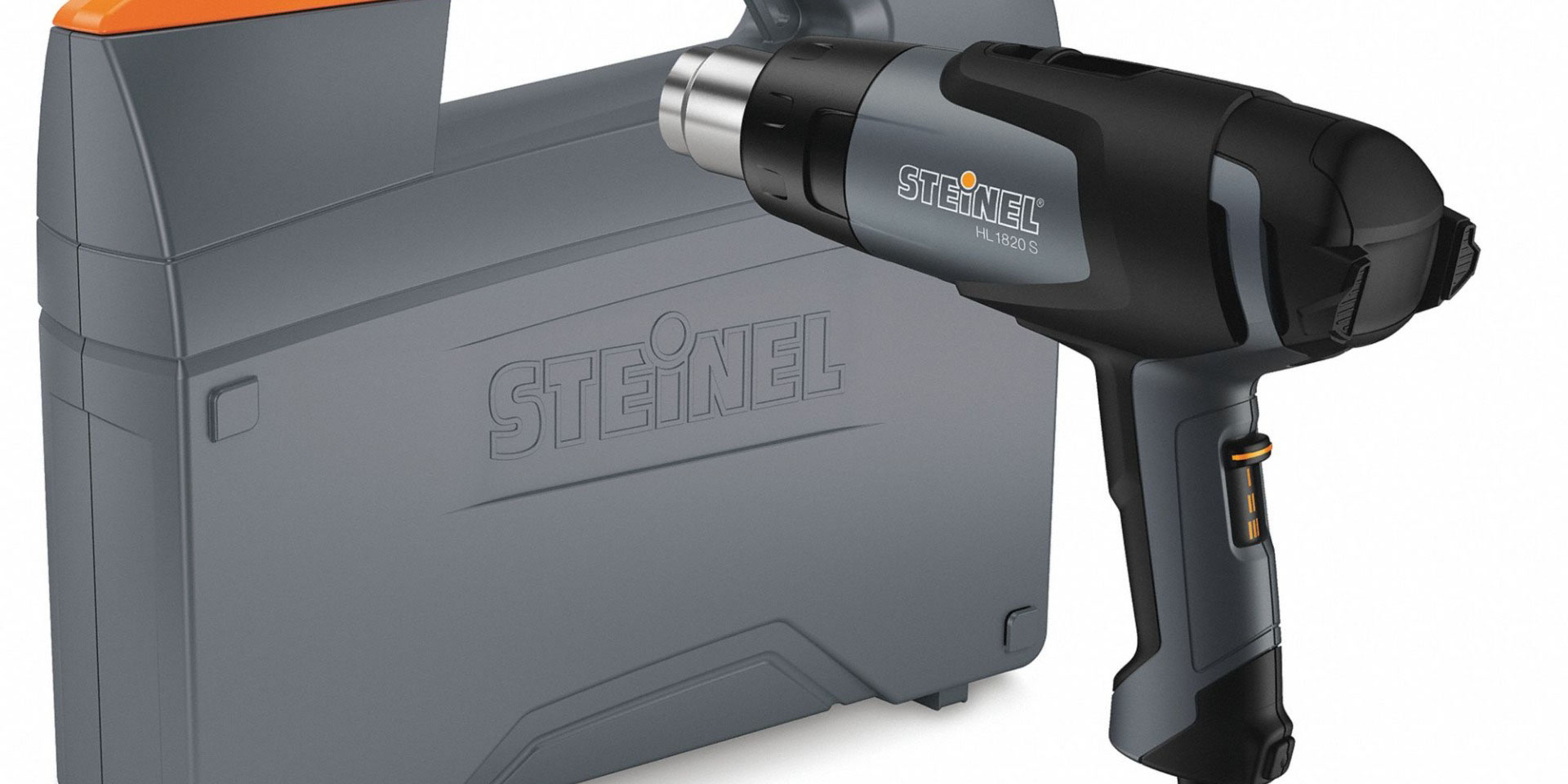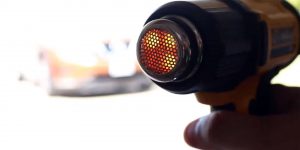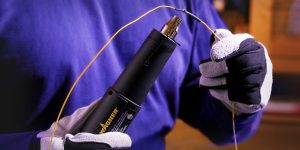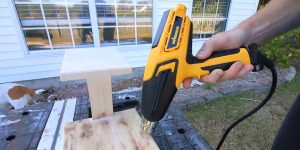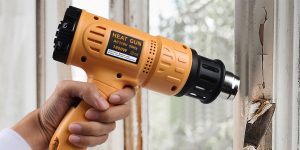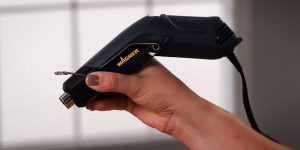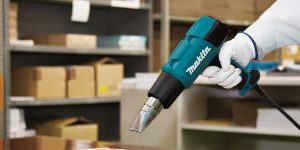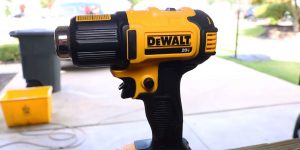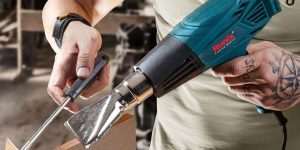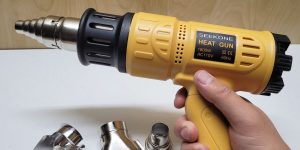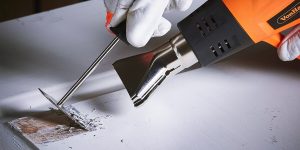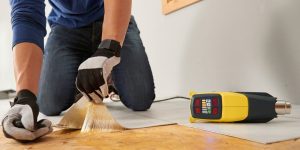Here we speak about three main types of heat guns: electric, gas, and infrared. Each type has its advantages and disadvantages. Each type of heat gun produces different heat and is better suited for specific tasks.
Heat gun types
An electric heat gun
An electric heat gun is a tool that uses electricity to generate heat. An electric heat gun works by passing an electric current through a resistive heating element. This element, usually made of a metal such as copper or nickel, is resistant to the flow of electricity and generates heat as a result. The heat generated by the element is then transferred to the surrounding air, which in turn heats the material that the heat gun is pointed at.
There are several benefits to using an electric heat gun over a traditional flame-based heat gun:
- Electric heat guns are the safest option, they can be used where open flames are not allowed, such as in many industrial and commercial settings.
- Electric heat guns typically generate fewer emissions than their flame-based counterparts, making them more environmentally friendly.
- Electric heat guns often reach higher temperatures than flame-based heat guns, making them ideal for specific applications.
Electric heat guns are used in a variety of applications, including drying paint, removing adhesive labels, and shaping plastic. They can also be used to speed up the curing process of certain materials, such as epoxy resin. Additionally, electric heat guns are often used in the fabrication of circuit boards and the soldering of electronic components. However, it also has disadvantages, including the price, as it is often expensive to purchase. Additionally, electric heat guns can be dangerous to use if not handled properly, as they can easily cause burns.
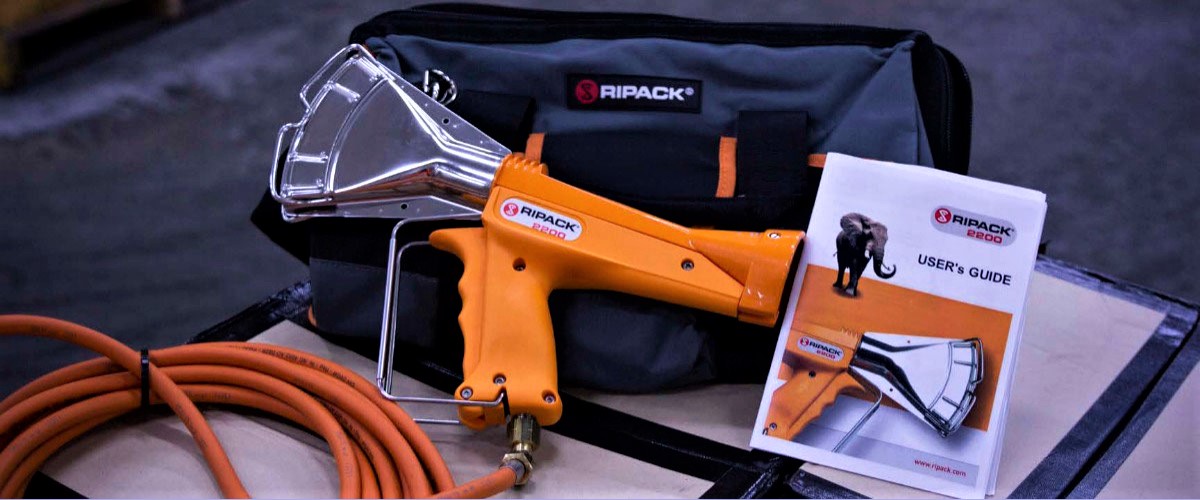
Gas heat gun
A gas heat gun is a tool that uses a stream of hot gas to heat up and melt materials. It is often used in manufacturing and repair applications where heat needs to be applied quickly and evenly to a surface. Gas heat guns can be powered by either natural gas or propane, and they are available in portable and stationary models.
Gas heat guns are often used to heat pipes so they can be bent or welded. They can also remove paint, coatings, and adhesives from surfaces. In some cases, gas heat guns are also used to shrink wrap products.
Some pros of using a gas heat gun include that they are portable, relatively inexpensive, and can be used in various settings. Gas heat guns also have the advantage of not requiring an electrical outlet, which can be a limiting factor for some users. However, you can come across some cons of gas heat guns, including that they can be dangerous to use and produce harmful fumes. Also, gas heat guns may not be as effective as other heat guns in some applications.
There are a few things to keep in mind when using a gas heat gun:
- It is essential to make sure that the area around the gun is well ventilated.
- Always wear protective gear, such as gloves and goggles, when using a gas heat gun.
- Follow the manufacturer’s instructions carefully to avoid accidents.
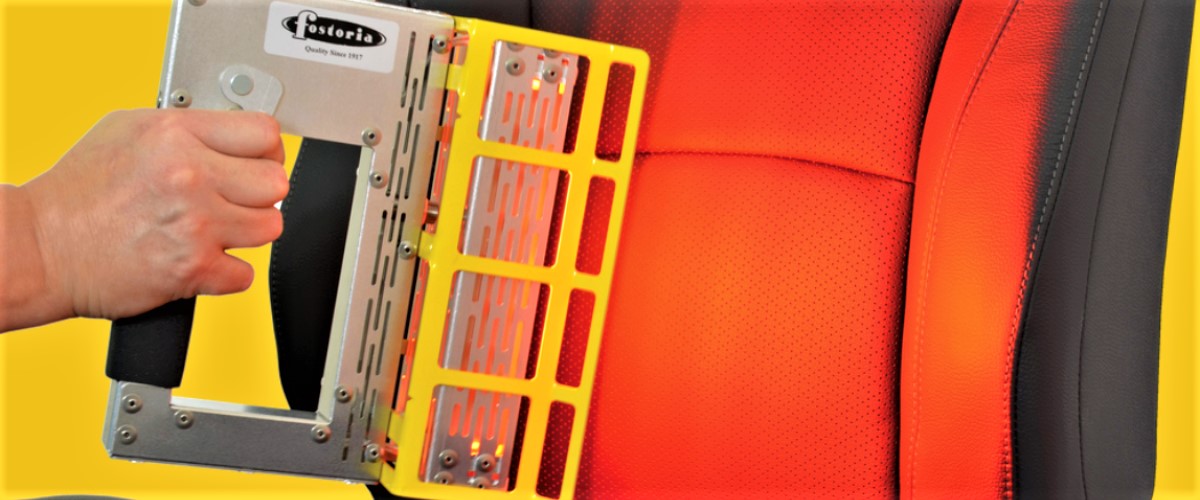
Infrared heat gun
An infrared heat gun is a tool that emits a beam of infrared radiation. Infrared radiation is an invisible type of energy to the human eye but can be felt as heat.
Infrared heat guns emit a beam of invisible infrared radiation. When this beam hits an object, it causes the object to become hot. The amount of heat produced by an infrared heat gun depends on the wavelength of the radiation and the object’s ability to absorb and reflect it.
Infrared heat guns are classified according to their output power and wavelength. Low-power heat guns emit infrared radiation at wavelengths between 2 and 4 microns and have output power levels between 500 and 1500 watts. Medium-power heat guns emit infrared radiation at wavelengths between 1 and 2 microns and have output power levels between 1500 and 3000 watts. Finally, high-power heat guns emit infrared radiation at wavelengths between 0.5 and 1 micron and have output power levels greater than 3000 watts.
Infrared heat guns are used in a variety of industries, including automotive, aerospace, electronics, and medical. They commonly solder electronic components, weld plastic, and braze metal parts. Infrared heat guns are also used to cure coatings and adhesives and to dry wet surfaces.
Infrared heat guns are available in a variety of sizes and shapes. The most common type is the hand-held heat gun, which is used for small-scale applications. However, Benchtop heat guns are also available for larger-scale applications.
Infrared heat guns are typically powered by electricity. However, some models are powered by gas or propane.
What type of heat gun is the most universal: electric, gas, or infrared?
There is no definitive answer to this question as it depends on the specific application for which the heat gun will be used.
However, electric heat guns are typically the most versatile and can be used for various tasks, making them a good choice for general use. Gas-powered heat guns may be better suited for outdoor applications or for use in areas where there is no electricity available. In contrast, infrared heat guns are often used for more delicate tasks that require more precise heat control.

